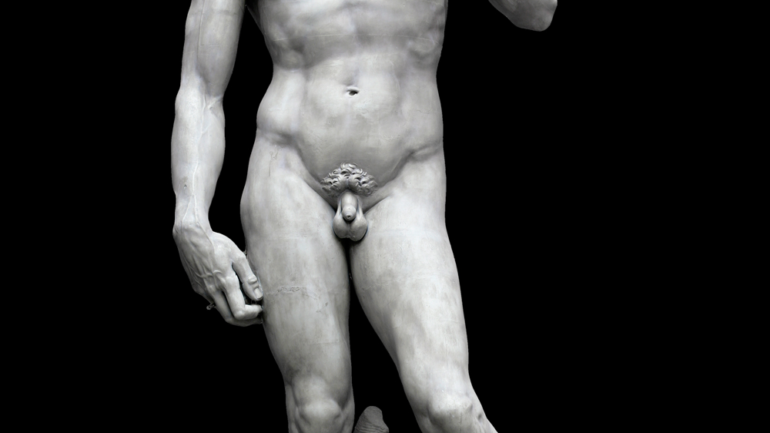Caravaggio’s works are masterpieces of any era. He is personally my favorite artist.
Caravaggio: Turning Paintings into Theaters
- Caravaggio (1571–1610) was a famous Italian painter from the late 16th to early 17th century who had a significant influence on the formation of the Baroque style. In the realm of painting, Caravaggio introduced radical naturalism, emphasizing intricate detail and dramatic light-dark contrasts, making Baroque art more realistic and vibrant.
- Caravaggio, whose full name was Michelangelo Merisi da Caravaggio, was born in the northern Italian village of Caravaggio, hence the name. He died at the young age of 39 and was often referred to as “the painter with the worst temper in history.” He even killed a man in a duel and spent much of his life on the run, living in Rome, Naples, Malta, and Sicily.
- Caravaggio and the Carracci family represented a “dual opposition” during the Baroque period. The Carracci were part of the “start” school, upholding the classical art traditions of the Renaissance, while Caravaggio was a full-fledged “end” school artist, rejecting previous structures and developing his unique artistic style. Caravaggio represented the darker, reformative side of Baroque art, viewing the Renaissance as a conclusion.
- Caravaggio’s era was marked by the Counter-Reformation. The Catholic Church, seeking to maintain its dominance, opposed the Protestant Reformation initiated by Martin Luther, and began to pay special attention to the development of art. The Reformation promoted a puritanical way of life and viewed art as a seductive, sad vanity, while the Catholic Church used art as a tool to educate the masses. However, the subtle educational influence of Renaissance art no longer served to sound the alarm, so Baroque art was elevated in status during this time in Italy, with Caravaggio becoming one of the Church’s most important supported artists.
- Caravaggio excelled at using darkness to highlight light. Compared to previous artists, Caravaggio’s use of light and shadow was much more intense, with backgrounds often sinking into total darkness. His works demonstrated that to convey a theme, the best method was not just glorifying it but using contrasting negatives. His technique of highlighting light through darkness fit perfectly within the broader historical context of the Counter-Reformation.
- Caravaggio placed great emphasis on realism in his paintings. Critics of his work labeled it “naturalism,” calling it crude, wild, and too primitive. However, this only underscores that Caravaggio’s art was indeed filled with realism. Even in religious themes, he often depicted less idealized, more truthful figures, with a fair share of unsightly yet realistic human faces. In his famous work Death of the Virgin, unlike earlier depictions of the Assumption of the Virgin by Titian and Correggio that presented a triumphant and joyful scene, Caravaggio’s Virgin has a pale, lifeless face—depicting her as an ordinary woman’s corpse. This highlights his relentless pursuit of truth.
- Caravaggio achieved a sense of participation in his paintings. He used the dramatic elements of his scenes to directly draw viewers into the artwork, making the moment feel as though it was unfolding before them. With his masterful technique, he captured your attention even in still-life paintings. For example, in a painting of a fruit bowl, you might be tempted to push the fruits back into place because the bowl’s edge is hanging precariously over the table, making it look as though it could topple at any moment.
- Caravaggio had a remarkable ability to capture dramatic moments, and he was skilled at using details to create a strong sense of participation. His painting The Cardsharps depicts cheaters rigging a game and a confederate signaling the cheat. In this scene, viewers almost feel like they are part of the action, imagining the next step in the drama.
- This unique dramatic quality of Caravaggio’s work wasn’t limited to secular subjects; it extended to religious art as well. While countless works during the Renaissance depicted Jesus’s death and resurrection, few artists could show both crucifixion and resurrection in the same painting. Caravaggio’s Doubting Thomas used the detail of Thomas touching the wounds of the resurrected Jesus to depict both death and resurrection in one work, transforming the painting into a dramatic, theatrical moment.
- Caravaggio was a proponent of violent aesthetics and frequently painted scenes of beheadings and blood splatters. He excelled at capturing the ugliness and brutality of human nature, using it to convey his intended themes. For instance, in Salome with the Head of John the Baptist, he depicts the gruesome moment of presenting the severed head of Saint John to Salome. In David with the Head of Goliath, Caravaggio even painted Goliath’s severed head in his own image, creating a chilling effect. His works, such as Judith Beheading Holofernes, are intensely bloody, reflecting his attraction to the violence in human nature.
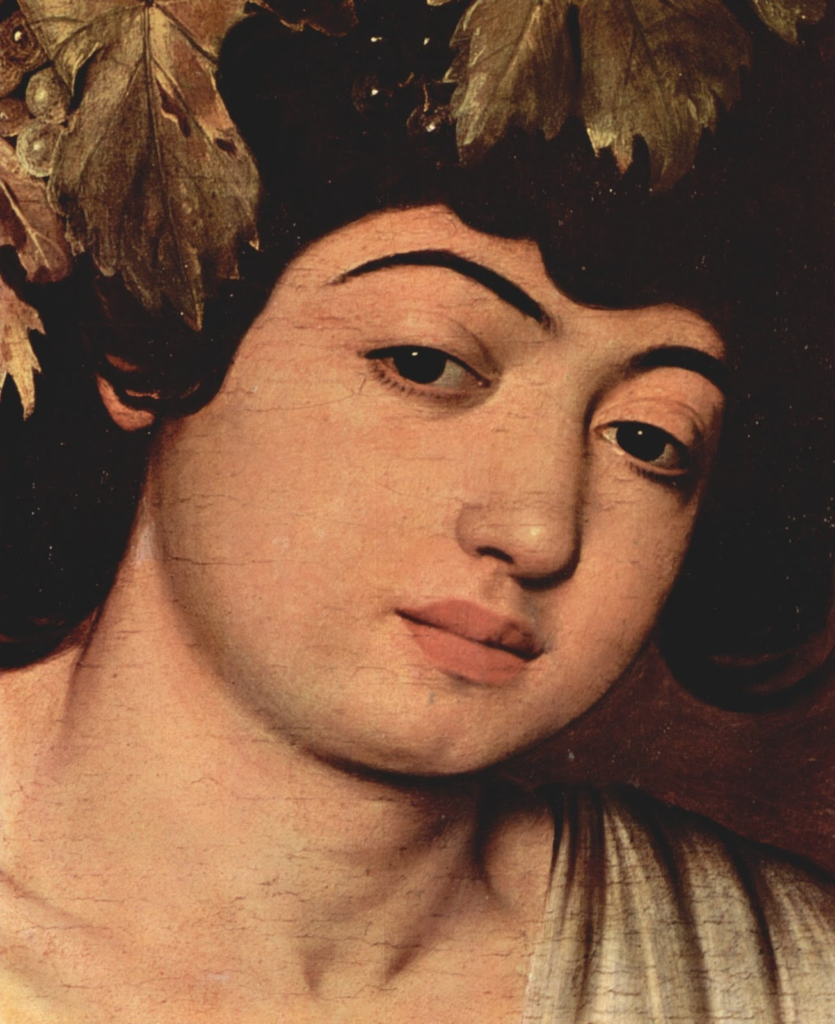
Caravaggio – “The Drunken Bacchus” (detail), currently housed at the Uffizi Gallery in Florence, Italy. It is said that the figure in the painting is his homosexual lover.
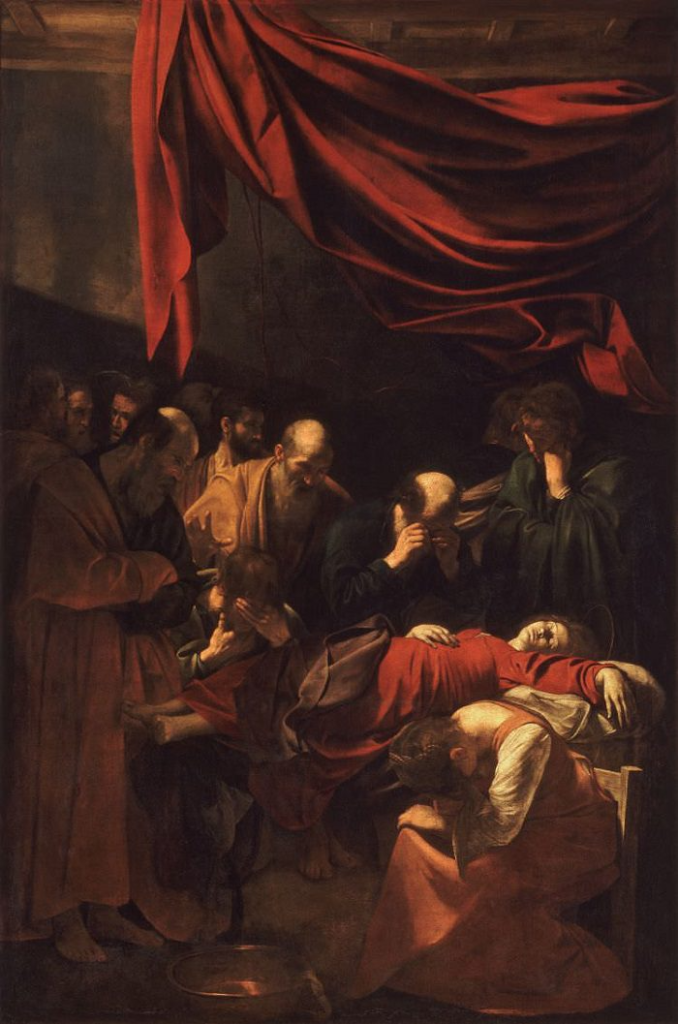
Caravaggio – “The Death of the Virgin”, currently housed in the Louvre Museum in Paris. Unlike the glorious depictions by earlier artists, the Virgin’s face is pale, turned into the corpse of an ordinary woman.
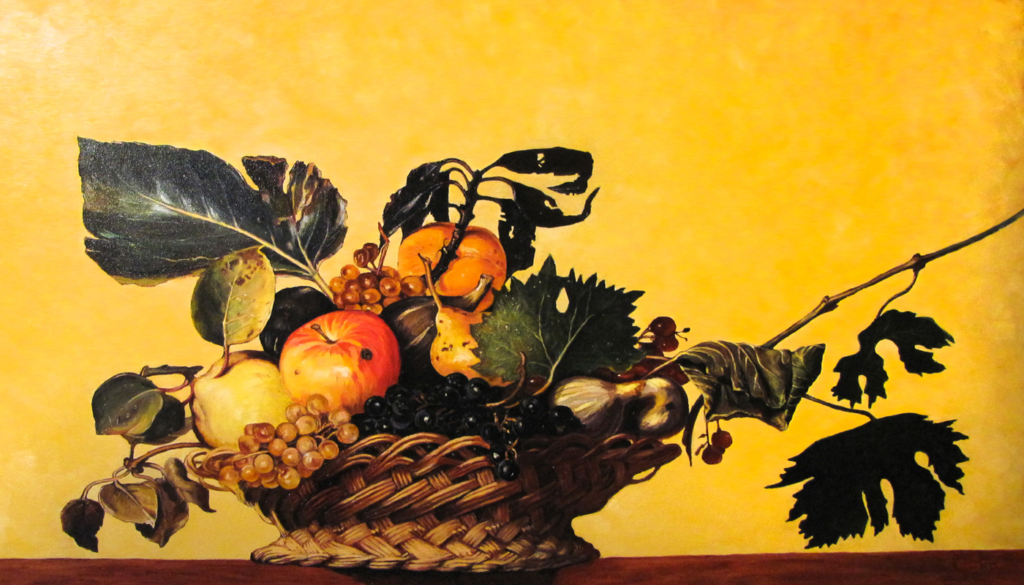
Caravaggio – “Still Life with Fruit”, currently housed at the Ambrosiana Art Gallery in Milan. The fruit bowl appears to be teetering on the edge, making you want to rush over and push it back into place.
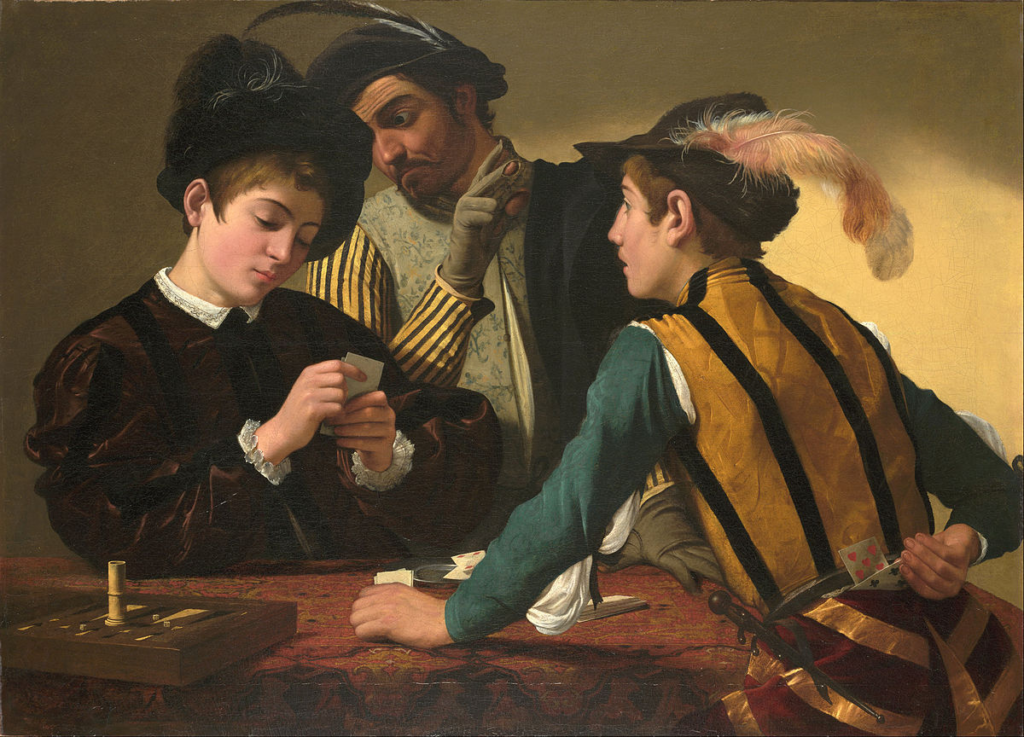
Caravaggio – “The Cardsharps”, currently housed at the Kimbell Art Museum in Texas, USA. The painting captures intense participation for the viewer through intricate details.

Caravaggio – “The Incredulity of Saint Thomas”, currently housed at the Sanssouci Palace Gallery in Potsdam, Germany. The painting depicts the moment when Thomas touches the wounds of the newly resurrected Jesus, portraying both death and resurrection in the same work.

Caravaggio – “The Beheading of Saint John the Baptist”, currently housed at the St. John’s Co-Cathedral in Valletta, Malta.

Caravaggio – “Judith Beheading Holofernes”, currently housed at the Galleria Nazionale d’Arte Antica in the Palazzo Barberini in Rome. This painting exemplifies Caravaggio’s violent aesthetic.
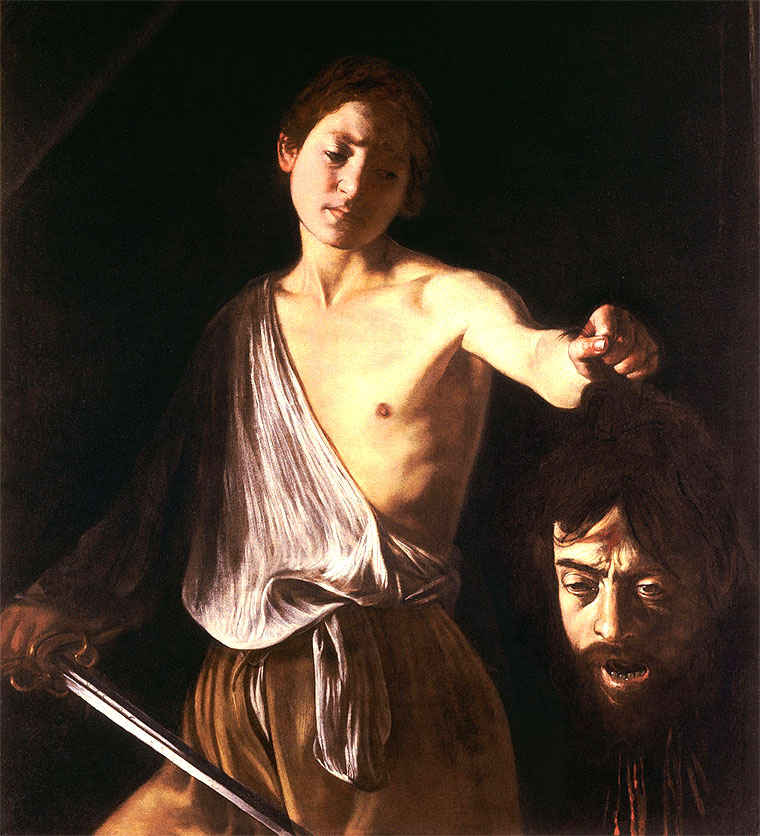
Caravaggio – “David with the Head of Goliath”, currently housed at the Borghese Gallery in Italy.
Tip:
Visit Naples to See Caravaggio’s Works
To view Caravaggio’s works, you don’t necessarily have to go to Rome. In the southern part of Italy, Naples has many of his religious paintings. After committing murder, Caravaggio fled and lived in hiding there for a long time. Even today, Naples still carries the atmosphere that suits Caravaggio’s style—it’s a place with relatively poor security and high unemployment rates. If you visit, be sure to stay alert and safe.


